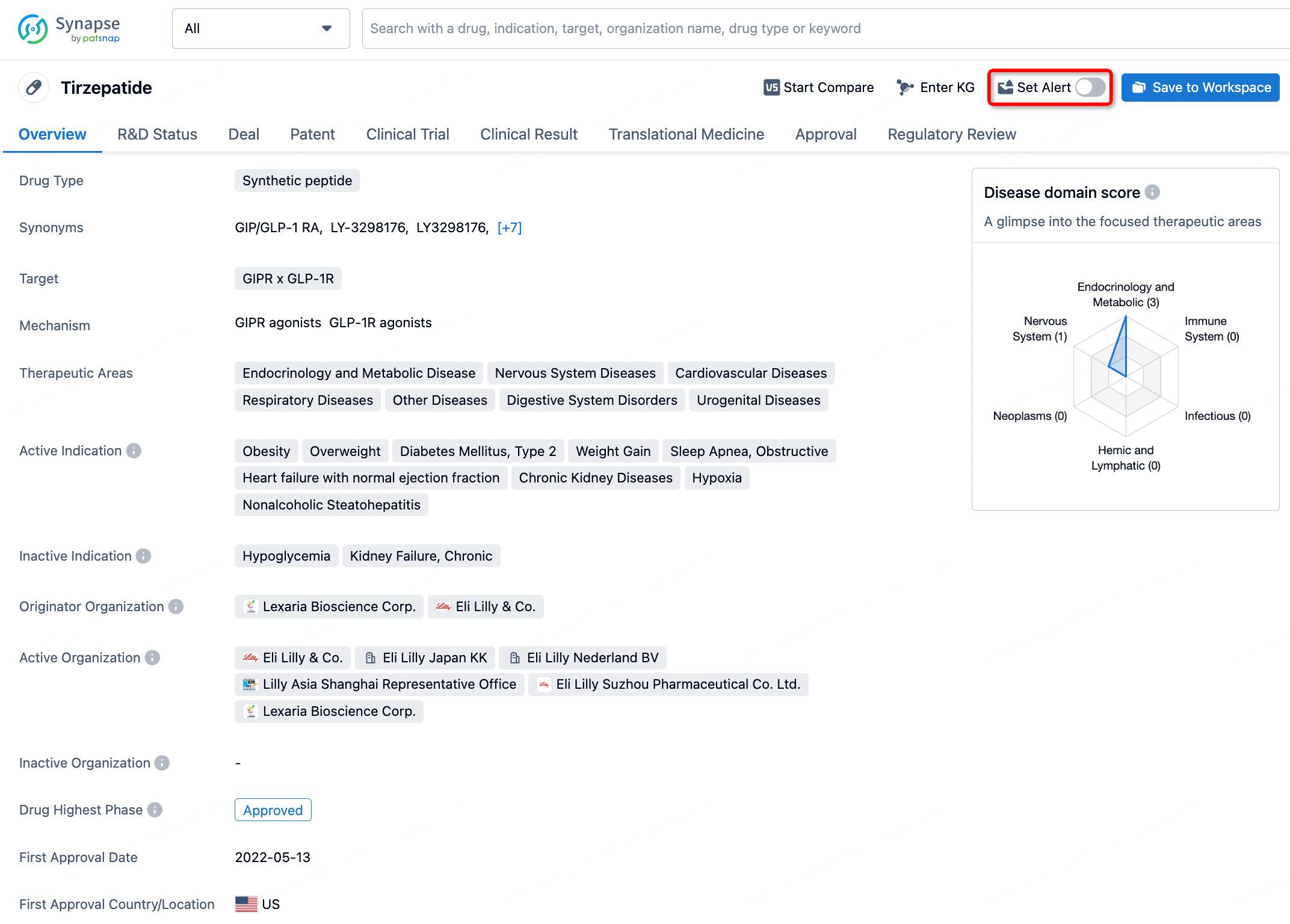Request Demo
What is the mechanism of Medroxyprogesterone Acetate?
18 July 2024
Medroxyprogesterone acetate (MPA) is a synthetic progestin, a type of medication that mimics the activity of the naturally occurring hormone progesterone. It is widely prescribed for a range of conditions, including menstrual disorders, contraception, and hormone replacement therapy. Understanding the mechanism of action of medroxyprogesterone acetate provides insight into its therapeutic uses and effects on the body.
Medroxyprogesterone acetate exerts its effects primarily through its interaction with the progesterone receptor, a type of nuclear hormone receptor found in various tissues, including the reproductive organs, brain, and bones. When MPA binds to the progesterone receptor, it induces a conformational change in the receptor, allowing it to interact with specific DNA sequences known as hormone response elements. This interaction promotes or represses the transcription of target genes, leading to changes in protein synthesis that drive the physiological effects of the hormone.
One of the key roles of MPA is its ability to regulate the menstrual cycle. By acting on the endometrium, or the lining of the uterus, MPA promotes the transition from the proliferative phase, driven by estrogen, to the secretory phase. This process prepares the endometrium for potential embryo implantation by increasing the vascularization and nutrient supply. If fertilization does not occur, the withdrawal of MPA leads to the shedding of the endometrial lining, resulting in menstruation.
In the context of contraception, medroxyprogesterone acetate is utilized in both oral and injectable forms. MPA works by inhibiting the secretion of gonadotropins, hormones released by the pituitary gland that stimulate the ovaries to produce eggs. By suppressing the release of luteinizing hormone (LH) and follicle-stimulating hormone (FSH), MPA prevents ovulation, thereby reducing the likelihood of pregnancy. Additionally, MPA thickens cervical mucus, making it more difficult for sperm to penetrate and reach any eggs that may be released.
Medroxyprogesterone acetate also plays a crucial role in hormone replacement therapy, particularly in postmenopausal women. During menopause, the levels of estrogen and progesterone decrease, leading to symptoms such as hot flashes, vaginal dryness, and an increased risk of osteoporosis. When used in combination with estrogen, MPA helps mitigate these symptoms and provides a protective effect on the endometrium. Estrogen alone can cause endometrial hyperplasia, an excessive thickening of the uterine lining that may lead to cancer. MPA counteracts this risk by promoting regular shedding of the endometrial lining.
Beyond reproductive health, medroxyprogesterone acetate has other therapeutic applications. In certain cancer treatments, such as endometrial cancer and breast cancer, MPA can slow the growth of cancer cells by interfering with hormone-dependent pathways. It is also used in the management of endometriosis, a condition in which endometrial tissue grows outside the uterus, causing pain and infertility. By suppressing the growth and activity of ectopic endometrial tissue, MPA alleviates symptoms and improves the quality of life for affected individuals.
While medroxyprogesterone acetate is effective in its various applications, it is not without potential side effects. Common side effects include weight gain, headache, mood changes, and irregular menstrual bleeding. Long-term use of MPA, especially in high doses, has been associated with an increased risk of cardiovascular events and bone density loss. Therefore, it is essential for healthcare providers to carefully consider the benefits and risks when prescribing MPA and to monitor patients regularly.
In summary, medroxyprogesterone acetate is a versatile synthetic progestin that acts through the progesterone receptor to regulate gene expression and elicit a range of physiological effects. Its ability to modulate the menstrual cycle, prevent ovulation, and provide endometrial protection makes it invaluable in reproductive health and hormone replacement therapy. Its applications extend to cancer treatment and the management of endometriosis, highlighting its broad therapeutic potential. However, like all medications, MPA must be used judiciously to balance its benefits against potential risks.
Medroxyprogesterone acetate exerts its effects primarily through its interaction with the progesterone receptor, a type of nuclear hormone receptor found in various tissues, including the reproductive organs, brain, and bones. When MPA binds to the progesterone receptor, it induces a conformational change in the receptor, allowing it to interact with specific DNA sequences known as hormone response elements. This interaction promotes or represses the transcription of target genes, leading to changes in protein synthesis that drive the physiological effects of the hormone.
One of the key roles of MPA is its ability to regulate the menstrual cycle. By acting on the endometrium, or the lining of the uterus, MPA promotes the transition from the proliferative phase, driven by estrogen, to the secretory phase. This process prepares the endometrium for potential embryo implantation by increasing the vascularization and nutrient supply. If fertilization does not occur, the withdrawal of MPA leads to the shedding of the endometrial lining, resulting in menstruation.
In the context of contraception, medroxyprogesterone acetate is utilized in both oral and injectable forms. MPA works by inhibiting the secretion of gonadotropins, hormones released by the pituitary gland that stimulate the ovaries to produce eggs. By suppressing the release of luteinizing hormone (LH) and follicle-stimulating hormone (FSH), MPA prevents ovulation, thereby reducing the likelihood of pregnancy. Additionally, MPA thickens cervical mucus, making it more difficult for sperm to penetrate and reach any eggs that may be released.
Medroxyprogesterone acetate also plays a crucial role in hormone replacement therapy, particularly in postmenopausal women. During menopause, the levels of estrogen and progesterone decrease, leading to symptoms such as hot flashes, vaginal dryness, and an increased risk of osteoporosis. When used in combination with estrogen, MPA helps mitigate these symptoms and provides a protective effect on the endometrium. Estrogen alone can cause endometrial hyperplasia, an excessive thickening of the uterine lining that may lead to cancer. MPA counteracts this risk by promoting regular shedding of the endometrial lining.
Beyond reproductive health, medroxyprogesterone acetate has other therapeutic applications. In certain cancer treatments, such as endometrial cancer and breast cancer, MPA can slow the growth of cancer cells by interfering with hormone-dependent pathways. It is also used in the management of endometriosis, a condition in which endometrial tissue grows outside the uterus, causing pain and infertility. By suppressing the growth and activity of ectopic endometrial tissue, MPA alleviates symptoms and improves the quality of life for affected individuals.
While medroxyprogesterone acetate is effective in its various applications, it is not without potential side effects. Common side effects include weight gain, headache, mood changes, and irregular menstrual bleeding. Long-term use of MPA, especially in high doses, has been associated with an increased risk of cardiovascular events and bone density loss. Therefore, it is essential for healthcare providers to carefully consider the benefits and risks when prescribing MPA and to monitor patients regularly.
In summary, medroxyprogesterone acetate is a versatile synthetic progestin that acts through the progesterone receptor to regulate gene expression and elicit a range of physiological effects. Its ability to modulate the menstrual cycle, prevent ovulation, and provide endometrial protection makes it invaluable in reproductive health and hormone replacement therapy. Its applications extend to cancer treatment and the management of endometriosis, highlighting its broad therapeutic potential. However, like all medications, MPA must be used judiciously to balance its benefits against potential risks.
How to obtain the latest development progress of all drugs?
In the Synapse database, you can stay updated on the latest research and development advances of all drugs. This service is accessible anytime and anywhere, with updates available daily or weekly. Use the "Set Alert" function to stay informed. Click on the image below to embark on a brand new journey of drug discovery!
AI Agents Built for Biopharma Breakthroughs
Accelerate discovery. Empower decisions. Transform outcomes.
Get started for free today!
Accelerate Strategic R&D decision making with Synapse, PatSnap’s AI-powered Connected Innovation Intelligence Platform Built for Life Sciences Professionals.
Start your data trial now!
Synapse data is also accessible to external entities via APIs or data packages. Empower better decisions with the latest in pharmaceutical intelligence.


